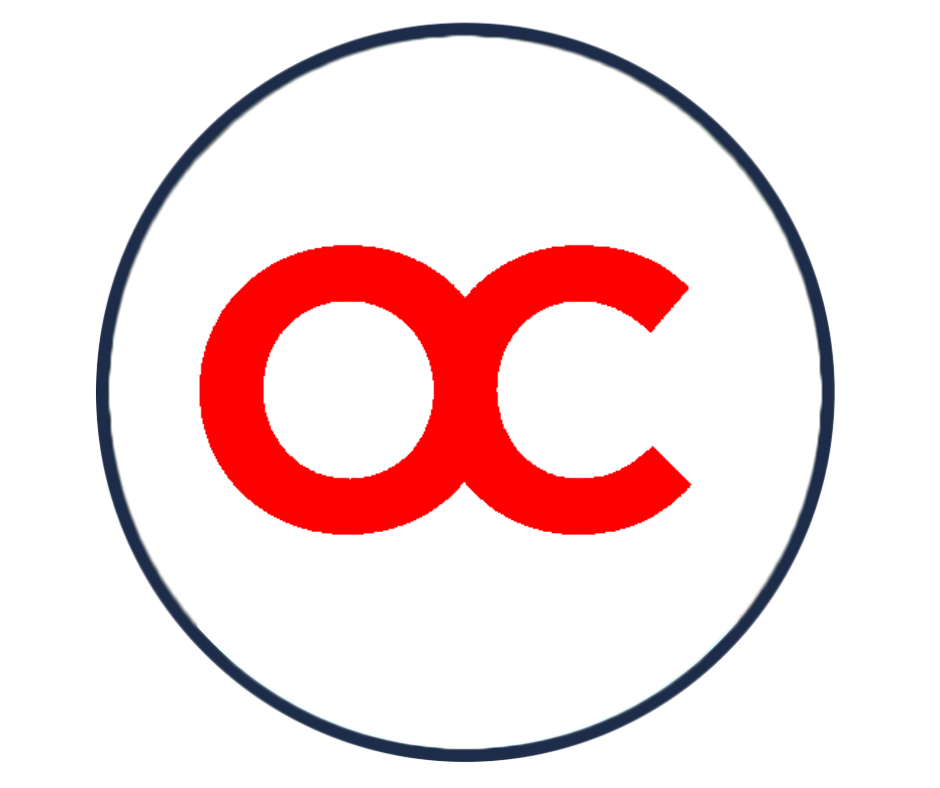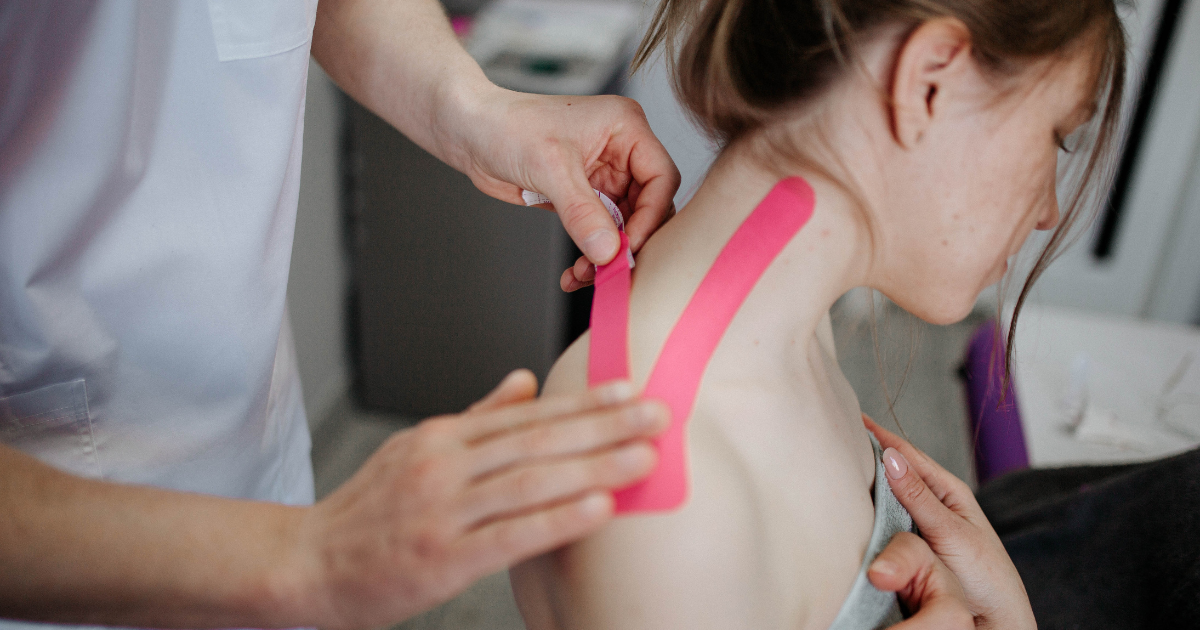Four K-Tape Application Techniques for Your Clinical Practice
By: Lexy Dong, MScPT Student ∙ Estimated reading time: 3 minutes
By: Lexy Dong, MScPT Student ∙ Estimated reading time: 3 minutes
K-Taping, a Great Skill for Your Treatment Toolbox?
Low back or neck pain; muscle tension; joint instabilities; disc problems; migraines; tinnitus; menstrual pain; urinary disorders; injury prevention, treatment, and pre-training in competitive and professional sport; postoperative edema and more. Do you find your patients coming in with any of the above clinical conditions? Are you looking to learn a multitude of new treatment possibilities?
K-Taping might be the right skill to add to your treatment toolbox. K-Taping is a holistic, non-pharmaceutical therapy that offers effective therapy for a wide range of indications. It is non-invasive, provides constant stimulation for several days, and allows full mobility of the area of injury to be maintained. Furthermore, K-Tape is free of drugs so there is no need to worry about it interacting with any of the other medications your patients may be taking.
The online healthcare course on Embodia Academy that this blog is based on, K-Taping Basics for Clinical Practice, with OrthoCanada and Canadian K-Taping instructor, four-time Olympic Games, International Sports Physiotherapist, Lois Pohlod, is a great introduction and preparation for the in-person K-Taping certification sessions which must be taken in person.
The online course is free for Embodia Members! You can learn more about Embodia Memberships here.
Follow the link below for more information about the course on Embodia Academy.
How is K-Tape Different From Regular Tape?
You might be thinking that tape is just tape, right? How different could they really be? Well, K-Tape and regular athletic tape actually have many differences. For starters, K-Tape is made out of an elastic material that allows for some stretch, whereas regular athletic tape is made from a rigid material. The elastic property of K-Tape allows for a range of motion of the body segment that it is applied to; it does not restrict movement, therefore, facilitating muscle function. K-Tape also has a positive effect on the healing process, it activates processes within the injured tissue. There are numerous benefits of using K-Tape!
Application of K-Tape
There are four different application techniques of K-Tape:
-
Muscle
In this technique, K-Tape is applied, with 10% tension, to hyper- or hypotonic muscles and/or after muscle injuries. This K-Tape technique can be used to lower or raise the tension of the muscle. To decrease the tension of the muscle, the tape should be applied from the insertion of the muscle toward the origin of the muscle. Contrarily, to increase the tension of the muscle, the tape should be applied from the origin of the muscle to the insertion of the muscle. The overall purpose of this technique is to normalize muscle tension, increase load capacity, reduce pain, and accelerate healing.
-
Lymphatics
In this technique, K-Tape is applied, with 10 to 25% tension, in a way to increase the subdermal space so that fluids can flow better. It aims to loosen fascial tissue and improve lymphatic drainage paths.
-
Ligaments
In this technique, K-Tape is applied with maximum tension; however, the tape ends are left unstretched. This K-Tape technique is used for over-stressed tendons, ligaments and trigger points. The overall purpose of this technique is to unload the ligament, increase load capacity, accelerate healing, and reduce pain. There are different types of ligament applications: bone to bone (e.g. MCL/LCL), bone to the muscle (e.g. Achilles Tendon), and Space Tape (pain/trigger points).
-
Basic Corrective Techniques
In these techniques, K-Tape can be applied with maximum tension and tape ends unstretched for functional correction or it can be applied at tensions varying between 40 and 80% for correction of fascial adhesions. The purpose of these techniques is to unload the fascial tissue, support joints, and reduce pain.
The video below shows a demonstration of one of the application techniques of K-Tape for Lateral Epicondylitis (Tennis Elbow)
How to Use K-Tape in Your Practice
- Certify through the K-Taping Academy.
- Purchase products are proven to be safe and effective, such as K-Tape Biviax products.
- Decide which of your patients would benefit from K-Taping techniques.
- Remember to review the contraindications and teach your patients how to care for their tape. Give them clear instructions.
- Stay within your scope of practice and bill patients for your time and product as indicated.
Click here for the OrthoCanada
course on Embodia Academy
The online healthcare course from OrthoCanada on Embodia Academy is free for Embodia Members, learn more about Embodia Memberships here.
About the K-Tape Certification
There are a number of K-Taping certifications available through K-Taping Academy Canada. Some of the available options are listed below:
- K-Taping Pro Live Virtual Course
- K-Taping Women’s Health
- K-Taping Pediatrics
Other taping blogs and courses on Embodia
- K-Taping for Women's Health Basics
- Clinical Taping Skills with Dance Specific Adaptations for Clinicians
---
Date written: 2 Feb 2023
Last update: 8 December 2025

OrthoCanada is a leading expert in the design and distribution of physiotherapy equipment and supplies to the Canadian rehab industry.
Founded in 1989, OrthoCanada has offices in Gatineau-Ottawa, Vancouver and Kitchener-Waterloo to provide technical support to healthcare professionals in the fields of physiotherapy, occupational therapy, sports medicine, osteopathy, chiropractic, athletic therapy, kinesiology, acupuncture and massage therapy and in diverse environments, including clinics, hospitals, rehabilitation centres, universities and colleges, recreational centres, sports teams and associations.
Our product range includes electrophysical agents, modalities, exercise equipment, treatment furniture, orthopedic and postural supports, diagnostic devices and clinic supplies. OrthoCanada is the Canadian distributor for Nustep, Seers Medical, K-Tape, BTL Physiotherapy, ITO Physiotherapy, Multi Radiance Medical, Patient Media, Torex and more.

Physiotherapist
Lois Pohlod is a Registered International Sports Physiotherapist living in Calgary, Alberta. Lois graduated from McGill University with a BSc. in Physical Therapy. As a Sports Physiotherapist Lois has had the opportunity to work with Canada’s top athletes. Lois was a member of the Canadian Health and Science team for the 1997 & 2013 Summer World University (FISU) Games, the 1999 & 2011 Pan American Games, and the 2002 Commonwealth Games in Manchester, England. She was the Chief Therapist at both the 2013 Winter FISU Games and the 2014 Commonwealth Games in Glasgow, and the 2019 Pan American Games in Lima, Peru.
Lois has been a physiotherapist at the Olympic Games on four occasions – the 2004 Games in Athens, the 2010 Winter Olympics in Vancouver, as the Chief Therapist in Rio de Janeiro in 2016, and as Chief Therapist for Tokyo 2020. As the Sport Physiotherapist with Team Canada’s National Women’s Hockey Team in 2000 & 2004, she experienced the thrill of winning two world championship gold medals.
Lois was presented with the Lifetime Member Award at the CPA Congress 2016. In addition to Sport Physiotherapy Canada interests, Lois uses her training in acupuncture and manual therapy along with K-Taping techniques in the treatment of all active Canadians.
